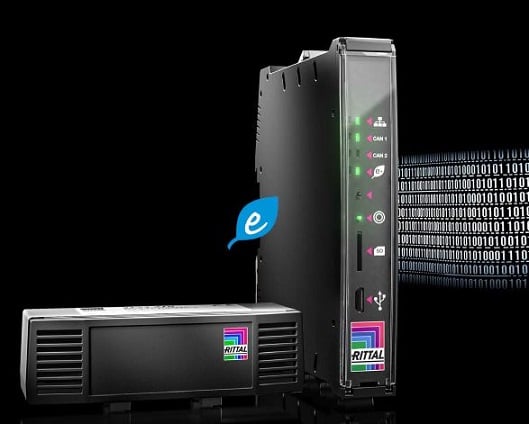
Automation is a target that many in the industrial sector are chasing. However, converting existing facilities into smart facilities can be a costly and time-consuming undertaking.
For a company to implement smart manufacturing, its machinery and equipment must be able to communicate with each other and across a network. Many in the industry are beginning to invest in steps toward automation through integrating sensors into their equipment and investing in IoT-ready machines and devices, even if they aren’t ready to put them online yet.
In order to fully integrate with IIoT (the Industrial Internet of Things) and the factory of the future, climate control units must also be brought online for remote monitoring and integration into IoT systems. For this, cooling units must either be replaced or retrofitted.
New Solution for IoT Connected Cooling: Retrofit
For many plant managers, the push towards automation means investing significant amounts of money in new connected devices. However, another option exists for enclosure cooling systems: Retrofit.
The practice of retrofitting your existing cooling systems for IoT connectivity wasn’t previously an option but using newly available adapters certain existing units can be connected. These adapters connect cooling via common plant protocols such as TCP/IP, OPC UA and Modbus.
Taking a retrofit approach allows all of your systems to “talk” to each other so you can ensure they are performing properly. Real-time monitoring of equipment enables alerts to be sent out, allowing you to get systems back online as quickly as possible to minimize costly downtime for your plant. Tracking data from cooling systems allows plant managers to confirm when equipment is running correctly, determine the hours in use and establish regular maintenance and inspections to keep cooling units running at optimal performance. When your climate products are running correctly, the rest of your sensitive equipment and controls can keep your plant smart.
When to Replace Rather than Retrofit
Retrofitting is the most cost-effective way to bring your climate control solutions online with your smart plant’s systems. However, retrofitting may not always be the best option depending on your current equipment. When should you replace cooling units rather than retrofit them?
- If your equipment is too old. Assess the age of your equipment, if it is more than five to seven years old, consider upgrading to newer, more efficient and IoT-enabled equipment.
- If your utility provider is offering incentives for installing more efficient equipment. Upgrade incentives vary based on timing and location, so if you’re considering an upgrade, check with your utility providers to see if there is a current or upcoming rebate program.
- Was your equipment wasn’t specified appropriately in the first place? One of the most common mistakes when specifying climate control units is installing undersized units. If your current units aren’t performing as they should, consider upgrading.
- If you’ve upgraded your drives and devices inside the enclosure but not your cooling unit. As drives and PLCs get smaller and smaller, plants will sometimes upgrade the contents of the enclosure, but overlook the climate control unit. If you can replace two drives with four or five, they may be more efficient than the older ones and less energy-loss, but the aggregate heat generated may have increased, meaning your climate solution may not be able to keep up.
- If your equipment has failed. Obviously, if your unit has failed, it should be replaced rather than retrofitted.
The Rittal Solution for Retrofit
Rittal recently launched an adapter for its Blue e cooling units that, when installed, ensures the units can link up to smart condition monitoring and IoT systems. The adapter can be used to set up condition monitoring for up to ten cooling units in a master/slave arrangement. It is compatible with all wall- and roof-mounted NEMA 12, 3R/4, and 4X rated Blue e units that employ the Comfort Controller. Combining the IoT Interface with the IoT Adapter, Blue e cooling units may be integrated into higher-level systems. The whole system can be configured and commissioned via the web server– quickly, conveniently and without the need for any programming.
Learn more about the adapter for retrofitting your climate solutions for IoT, check out the brochure. To read more on IoT and climate control, visit IoT-enabled Climate Control is Changing the Game.

